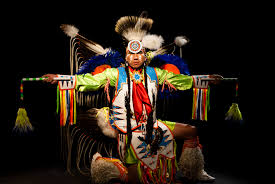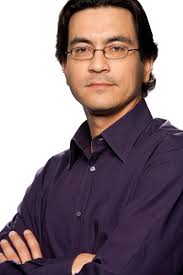For thousands of years, Indigenous peoples of North America have performed and conducted a variety of dance rituals which signify and celebrate different events. However, centuries of European colonialism and attempts of assimilation have destroyed many Native communities’ ability to pass on many dances from generation to generation. As a result, many Native peoples of different tribes have united as a single community to compete and partake in dance ceremonies such as the powwow or sundance across North America. This has created somewhat of a divide in the opinions of Indigenous experts, as some believe that practicing Indigenous dance rituals preserves Native identity and teaches the public about Native culture, while others believe that doing so only perpetuates the stereotype of the “dead indian” without reflecting the true identity of modern Indigenous peoples.
Native Pride Arts is an American company who’s mission is to keep Native culture alive through dance, storytelling and music (Native Pride Arts: Meet the Company). The company’s founder, Larry Yazzie is a two-time World Champion Fancy Dancer and member of the Sac and Fox Tribe of the Mississippi in Iowa, Meskwaki (Native Pride Arts: Meet the Company). He has performed at the Olympics, The Kennedy Center, and the Smithsonian i nstitute and also serves as a lecturer and educator, earning him the title as one of America’s leading expert on Native American dance (Native Pride Arts: Meet the Company). Yazzie reflects the belief that performing traditional Native dance preserves North American Indigenous culture and teaches others to appreciate cultural differences. He has even said “By sharing life stories through music, dance and storytelling, we nurture meaningful communication among all people (Native Pride Arts: Meet the Company).” Although many agree with Yazzie’s hopeful attitude, there are also many with whom this opinion is not shared.
nstitute and also serves as a lecturer and educator, earning him the title as one of America’s leading expert on Native American dance (Native Pride Arts: Meet the Company). Yazzie reflects the belief that performing traditional Native dance preserves North American Indigenous culture and teaches others to appreciate cultural differences. He has even said “By sharing life stories through music, dance and storytelling, we nurture meaningful communication among all people (Native Pride Arts: Meet the Company).” Although many agree with Yazzie’s hopeful attitude, there are also many with whom this opinion is not shared.
Duncan McCue isAnishinaabe, a member of the Chippewas of Georgina Island First Nation (McCue). He is a television and radio journalist for Canadian Broadcasting Corporation, as well as an adjunct professor for the University of British Columbia Graduate School of Journalism (McCue). On January 29 2014, McCue was part of a panel in Nanaimo, BC that discussed the media and its influence on relationships between Indigenous and non-Indigenous Canadians (McCue). McCue holds the belief that the media shows very limited aspects of modern Native life which includes traditional dance rituals. McCue is not in any way opposed to the celebration of traditional Native culture, but argues that defining that culture only through traditional dance perpetuates the image of the “dead indian” in Canadian society. This is clear when he says “To many Canadians, an aboriginal person wearing a button bla nket or beaded vest represents a bygone era. Dressed-up Indians are benign, without all those messy contemporary problems – suicides and land claims, mouldy houses and tax exemption (McCue).” McCue represents those who are dissatisfied with the admiration of Native people only when they are dressed in traditional attire, and not when they are facing extreme poverty and inequality on reserves.
nket or beaded vest represents a bygone era. Dressed-up Indians are benign, without all those messy contemporary problems – suicides and land claims, mouldy houses and tax exemption (McCue).” McCue represents those who are dissatisfied with the admiration of Native people only when they are dressed in traditional attire, and not when they are facing extreme poverty and inequality on reserves.
These experts disagree because it is clear they take very different approaches to educating non-Indigenous people about Indigenous culture. Perhaps, they are not too different in the sense that they both care enough to try and teach others about their culture and way of life. Even though they may hold different opinions, both are effective change-makers and prove to have a strong influence in the way Indigenous culture is portrayed .
Works Cited
McCue, Duncan. “What It Takes for Aboriginal People to Make the News…”CBC News.N.p., 29 . Jan. 2014. Web.
“Native Pride Arts: Meet the Company.” Native Pride Arts Company. N.p., n.d. Web. 22 Oct. 2016.